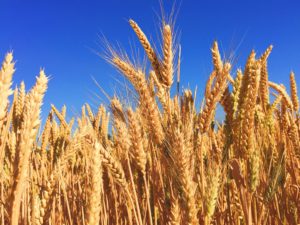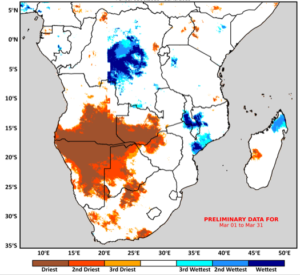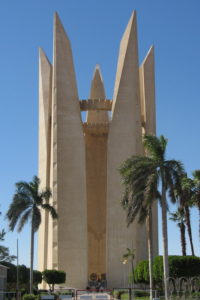
As Mary Magdalene, Mary and Salome approached the tomb on the morning after the Jewish sabbath to apply burial ointments to the body of Christ, they would have seen in the distance smoke coming out of the Jerusalem Temple. What was that about and what does it have to do with the Church?
According to the Bible, Jesus died on the Cross at 3pm on Passover and after arrangements were made His body was buried hurriedly at sundown with the approach of the Feast of Unleavened Bread. This would have been Thursday evening on our calendar. Because Unleavened Bread is considered an “obligatory” sabbath that was followed by the regular sabbath, the women were unable to apply burial ointments for two days until the morning after the sabbath, which was not only Sunday morning, but also the day of the Feast of Firstfruits.
Instead, what they found was an empty tomb and an enormous covering stone rolled to the side. The Feast of Firstfruits focuses on the first agricultural harvest but its theme is that of resurrection and new life. Just as Jesus likened Himself to a “kernel of wheat” that had to be buried to produce a yield, likewise He was resurrected on the Feast of Firstfruits and is our “Firstfruits” of the Resurrection. (1st Corinthians 15:20)
Paul also reminds us that these holy days and feast dates are “a foreshadowing of events to come” (Colossians 2:16-17). Not only are the feast dates predictive, but they are fulfilled on the date they are observed. So what other Biblical events have occurred on the Feast of Firstfruits?
- Noah’s Ark rested on Mount Ararat after the Flood. “And the ark rested in the seventh month, on the seventeenth day of the month, upon the mountains of Ararat.” (Genesis 8:4) Almost all of the ancient nations began their year in the fall, but after the Exodus from Egypt God instructed Moses to rotate the calendar forward by 6 months so that the 7th month (Nisan) would become the 1st month of the year. (Exodus 12:1-2) The Feast of Firstfruits is celebrated on the 17th of Nisan. After floating for a year, Noah and his family must have wondered if they would ever see land again. We can only imagine how they must have celebrated a new beginning of life on this day after the flood waters receded.
- Israel’s Miraculous crosses over the Red Sea. During the Exodus, the Hebrews first camped at Succoth and then Etham before arriving on the edge of the Wilderness and the Red Sea with rising dust of the Egyptian chariots visible behind them. There was a murmuring of complaints to Moses and he then turned to the only sure help that exists for any of us. “And Moses said unto the people, Fear ye not, stand still, and see the salvation of the Lord, which he will shew to you today: for the Egyptians whom ye have seen today, ye shall see them again no more for ever. The Lord shall fight for you, and ye shall hold your peace.” (Exodus 14:13-14) Then, before their eyes, God parted the waters of the Red Sea and the multitude of Israelites crossed over into a new life as a resurrected nation on the Feast of Firstfruits, the 17th of Nisan.
- Israel Eats the Firstfruits of the Promised Land. Throughout the 40 years that Israel wandered in the Wilderness, God provided supernatural food—manna—to feed the growing nation. “The children of Israel encamped in Gilgal, and kept the Passover on the fourteenth day of the month at even in the plains of Jericho. And they did eat of the old corn of the land on the morrow after the Passover, unleavened cakes, and parched corn in the selfsame day. And the manna ceased on the morrow after they had eaten of the old corn of the land; neither had the children of Israel manna any more; but they did eat of the fruit of the land of Canaan that year. (Joshua 5:10-12). After crossing the Jordan River they ate the Passover Supper on the 14th of Nisan and the next day, the day after the Passover, they ate of the old corn of the land. The next day, the 16th of Nisan was the last day that God provided supernatural manna. The day following was the 17th day of Nisan or Feast of Firstfruits, and with no more manna available, the people began to eat of the fruit of the land of Canaan in that year, the firstfruits of the Land.
- By far the most important event that took place on this Feast date is the resurrection of Jesus Christ. Jesus celebrated this feast by conquering death Himself, then by offering the firstfruits to all future resurrections when “the graves were opened; and many bodies of the saints which slept arose, and came out of the graves after his resurrection, and went into the holy city, and appeared unto many.” (Matthew 27:52-53) There are several early church fathers whose accounts of these Old Testament saints being resurrected give more vivid color to this remarkable event. As Jesus presented Himself as the “Firstfruits” of the Resurrection, Matthew’s account emphasizes even further evidence in that “many bodies of the (Old Testament) saints which slept..went into the holy city, and appeared unto many.”
The Feast of Firstfruits is far more than just an annual holiday, it was also part of a “dress rehearsal” as was discussed last week regarding the meaning behind “holy convocations.” The Feasts of the Lord reveal pictures of God’s redemptive plan.
“Speak unto the children of Israel, and say unto them, When ye be come into the land which I give unto you, and shall reap the harvest thereof, then ye shall bring a sheaf of the firstfruits of your harvest unto the priest: And he shall wave the sheaf before the Lord, to be accepted for you: on the morrow after the sabbath the priest shall wave it. And ye shall offer that day when ye wave the sheaf an he lamb without blemish of the first year for a burnt offering unto the Lord. (Leviticus 23:10-12)
As an agricultural feast this feast corresponds with the harvest of barley in the land of Israel. Barley was the first crop reaped from the winter sowing. The priests of the Temple would harvest the first sheaf and bring it into the Temple as an offering before the Lord; the nation was thanking the Lord in advance for the coming harvest.
When the three women were approaching the tomb they could have seen smoke coming from the Temple. Why? For on this morning the High Priest would wave a sheaf of barley before the Lord equivalent to five pints (an “omer” in Hebrew) mixed with olive oil and frankincense that was burned on the sacrificial altar. What did the sheaf represent? It was a symbol of the coming summer or main harvest. In effect, the sheaf represents the firstfruits of a promised harvest just as the resurrection of Jesus Christ as our “Firstfruits” represents the promise of our resurrection. Unbeknownst to the High Priest and the three women approaching the empty tomb, the sheaf he was waving was a symbol of the risen Christ and the promised Resurrection.
This also marked the first day of a 50-day countdown known as the “counting of the Omer” whereby each day an additional sheaf (omer) of barley was waved by the high priest before the Lord….and which would culminate in yet another feast that holds great meaning and symbolism. Behind the details of the Bible, God often communicates through remarkable designs and patterns.
Sources: Dr. Thomas Ice, Grant Jeffrey, Dr. Chuck Missler, Dr. Andy Woods, Jack Langford


